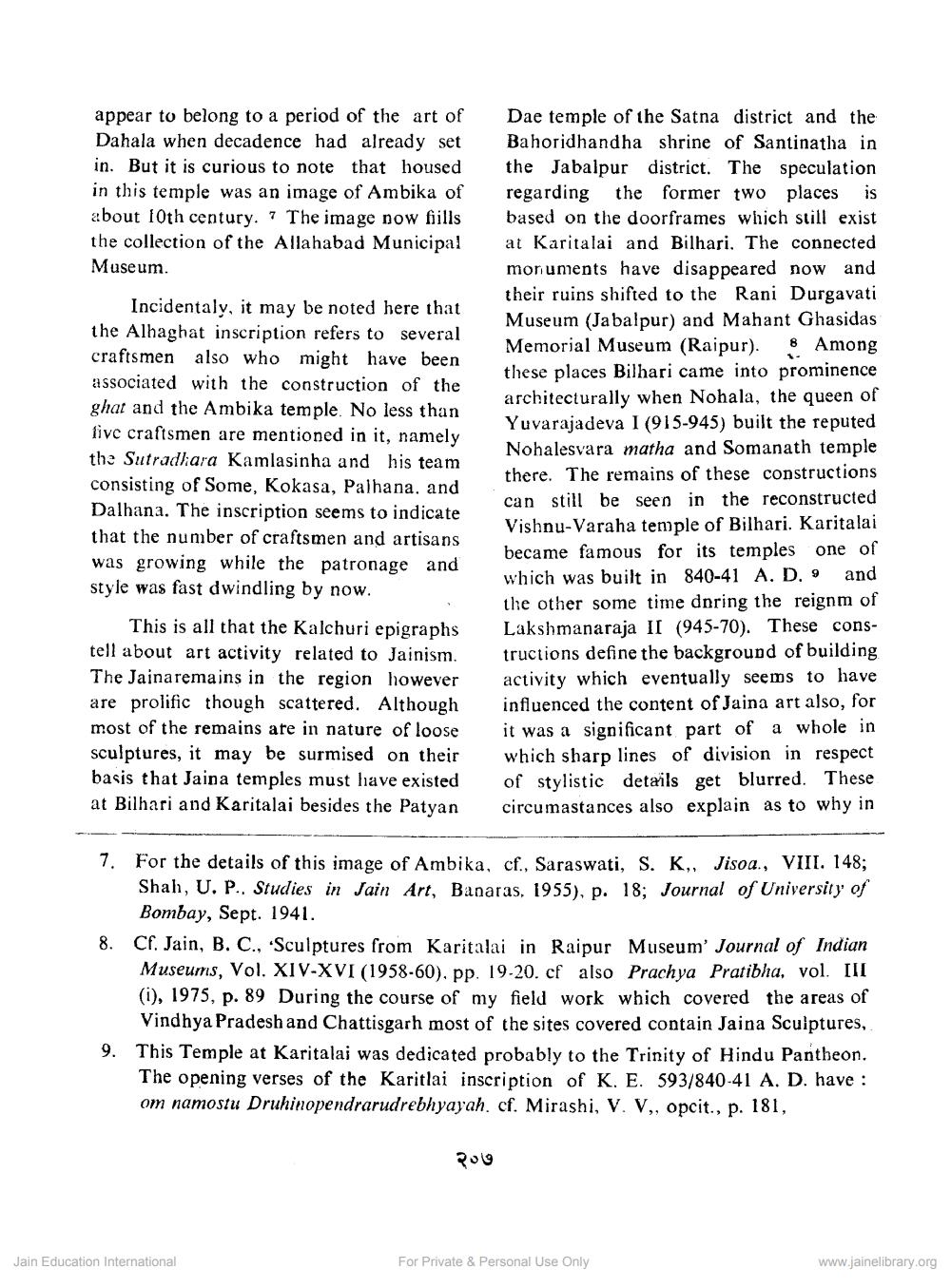________________
appear to belong to a period of the art of Dahala when decadence had already set in. But it is curious to note that housed in this temple was an image of Ambika of about 10th century. The image now fiills the collection of the Allahabad Municipal Museum.
Incidentaly, it may be noted here that the Alhaghat inscription refers to several craftsmen also who might have been associated with the construction of the ghat and the Ambika temple. No less than five craftsmen are mentioned in it, namely the Sutradhara Kamlasinha and his team consisting of Some, Kokasa, Palhana, and Dalhana. The inscription seems to indicate that the number of craftsmen and artisans was growing while the patronage and style was fast dwindling by now.
This is all that the Kalchuri epigraphs tell about art activity related to Jainism. The Jainaremains in the region however are prolific though scattered. Although most of the remains are in nature of loose sculptures, it may be surmised on their basis that Jaina temples must have existed at Bilhari and Karitalai besides the Patyan
7. For the details of this image of Ambika, cf., Saraswati, S. K., Jisoa., VIII. 148; Shah, U. P.. Studies in Jain Art, Banaras, 1955), p. 18; Journal of University of Bombay, Sept. 1941.
Dae temple of the Satna district and the Bahoridhandha shrine of Santinatha in the Jabalpur district. The speculation regarding the former two places is based on the doorframes which still exist at Karitalai and Bilhari. The connected monuments have disappeared now and their ruins shifted to the Rani Durgavati Museum (Jabalpur) and Mahant Ghasidas Memorial Museum (Raipur). Among these places Bilhari came into prominence architecturally when Nohala, the queen of Yuvarajadeva 1 (915-945) built the reputed Nohalesvara matha and Somanath temple there. The remains of these constructions can still be seen in the reconstructed Vishnu-Varaha temple of Bilhari. Karitalai became famous for its temples one of which was built in 840-41 A. D. and the other some time during the reign of Lakshmanaraja II (945-70). These cons tructions define the background of building activity which eventually seems to have influenced the content of Jaina art also, for it was a significant part of a whole in which sharp lines of division in respect. of stylistic details get blurred. These circumastances also explain as to why in
8. Cf. Jain, B. C., Sculptures from Karitalai in Raipur Museum' Journal of Indian Museums, Vol. XIV-XVI (1958-60). pp. 19-20. ef also Prachya Pratibha, vol. III (i), 1975, p. 89 During the course of my field work which covered the areas of Vindhya Pradesh and Chattisgarh most of the sites covered contain Jaina Sculptures, This Temple at Karitalai was dedicated probably to the Trinity of Hindu Pantheon. The opening verses of the Karitlai inscription of K. E. 593/840-41 A. D. have: om namostu Druhinopendrarudrebhyayah. cf. Mirashi. V. V,, opcit., p. 181,
Jain Education International
२०७
For Private & Personal Use Only
www.jainelibrary.org




